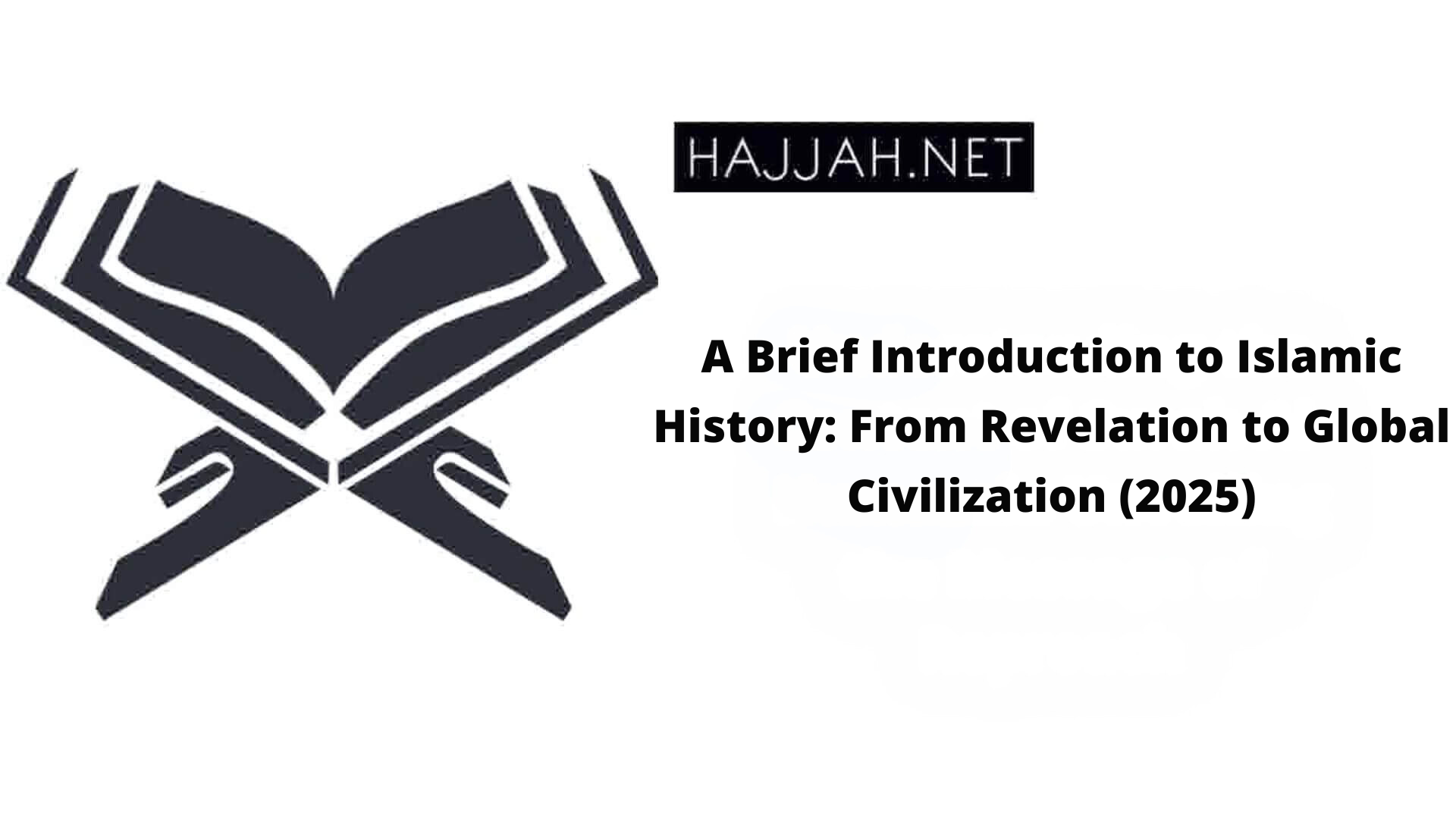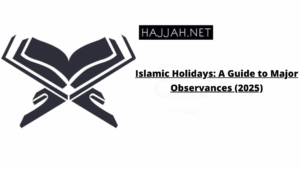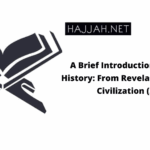Islamic history is a rich and diverse story spanning over 1,400 years, detailing the rise and evolution of a major world faith and the vibrant civilizations that grew around it. It is a history of prophets and caliphs, scientists and philosophers, empires and trade routes, and the spread of faith and knowledge across continents. From its origins in the Arabian Peninsula, Islamic civilization has profoundly shaped art, science, culture, and politics across the globe.
This article provides a brief overview of the major eras and key developments in this vast and influential history.
The Foundation Era: The Prophet & the Rightly Guided Caliphs (c. 610–661 CE)
The history of Islam begins with one man in the city of Makkah (Mecca).
Also Read
- The Prophet Muhammad (PBUH): Around 610 CE, Muhammad ibn Abdullah (peace and blessings be upon him), a respected merchant known for his integrity, began receiving divine revelations from Allah (God) through the Angel Jibril (Gabriel). These revelations, which continued for 23 years, form the Holy Quran, the sacred scripture of Islam. He preached a message of strict monotheism (Tawhid), social justice, and accountability in the Hereafter.
- The Hijra: Facing persecution in Makkah, the Prophet (PBUH) and his early followers migrated to the city of Yathrib in 622 CE. This pivotal event, known as the Hijra, marks the beginning of the Islamic calendar. The city was renamed Madinah, and it became the site of the first stable Muslim community (Ummah).
- The Rashidun Caliphate (632–661 CE): After the Prophet’s (PBUH) death in 632 CE, the Muslim community was led by a series of four of his closest companions, known as the Rashidun or “Rightly Guided Caliphs”:
- Abu Bakr As-Siddiq
- Umar ibn Al-Khattab
- Uthman ibn Affan
- Ali ibn Abi Talib During their rule, the Islamic state was consolidated, the Quran was compiled into a single volume, and the initial major expansions began, bringing Islam into Persia, Syria, and Egypt.
The Dynastic Caliphates & The Islamic Golden Age
Following the Rashidun period, leadership transitioned to dynastic rule.
- The Umayyad Caliphate (661–750 CE): With its capital in Damascus, the Umayyad Caliphate oversaw a period of immense territorial expansion. The Islamic empire stretched from Spain (Al-Andalus) in the west, across North Africa, to Central Asia and the borders of India in the east.
- The Abbasid Caliphate (750–1258 CE) & The Golden Age: The Abbasids overthrew the Umayyads and moved the capital to a newly founded city: Baghdad. This era ushered in the Islamic Golden Age, a period of extraordinary intellectual, scientific, and cultural flourishing.
- The House of Wisdom (Bayt al-Hikmah): Established in Baghdad, this renowned library and translation institute became a global center for learning.
- Major Contributions: Scholars translated and built upon Greek, Persian, and Indian knowledge, making groundbreaking contributions in:
- Mathematics: Development of algebra and algorithms (a term derived from the name of the great mathematician Al-Khwarizmi).
- Science & Astronomy: Advancements in optics, chemistry, and astronomical observation.
- Medicine: Pioneering hospitals, surgical techniques, and encyclopedic medical texts by figures like Ibn Sina (Avicenna).
- Philosophy: Deep engagement with and preservation of Greek philosophy.
Fragmentation and Regional Powers
Over time, the centralized power of the Abbasid Caliphate waned, and powerful regional dynasties emerged, each fostering its own cultural centers. Notable examples include:
- Al-Andalus (Islamic Spain): The Umayyads who escaped the Abbasid revolution established a thriving state in Spain, with its capital in Cordoba becoming a beacon of learning and tolerance in Europe.
- The Fatimids (909–1171 CE): A Shi’a caliphate that ruled across North Africa and established Cairo as their capital, founding the renowned Al-Azhar University.
- The Seljuk Turks: A Turkic dynasty that came to dominate much of the Middle East, and whose expansion played a role in triggering the Crusades, a period of prolonged conflict with European Christian powers.
The Spread of Islam to Southeast Asia, including Indonesia
While the Middle East was experiencing these shifts, Islam was spreading to other parts of the world through different means. In Southeast Asia, including the Indonesian archipelago, the faith arrived not primarily through conquest, but through peaceful avenues:
- Trade Routes: Arab, Persian, and Indian Muslim traders established communities in port cities across Sumatra, Java, and the Malay Peninsula.
- Sufism: The teachings of Sufi mystics, with their emphasis on spirituality and accommodation of local cultures, resonated with the local populations.
- Establishment of Sultanates: By the 13th century, the first Islamic kingdoms, such as the Samudra Pasai Sultanate in northern Sumatra, were established, and from these centers, Islam gradually spread throughout the islands, becoming the dominant faith in Indonesia over centuries.
The Era of Great “Gunpowder” Empires (c. 1450–1924 CE)
A later period of Islamic history was dominated by three powerful and influential empires:
- The Ottoman Empire (c. 1299–1922): Based in modern-day Turkey, the Ottomans conquered Constantinople (renaming it Istanbul) in 1453 and built a vast, long-lasting empire that spanned Southeast Europe, Western Asia, and North Africa. The Ottoman Sultan also held the title of Caliph for much of its later history.
- The Safavid Empire (1501–1736): Centered in Persia (modern Iran), the Safavids established Twelver Shia Islam as the state religion, a decision whose consequences shape the region to this day. They were known for their stunning contributions to art and architecture.
- The Mughal Empire (1526–1857): Ruling over most of the Indian subcontinent, the Mughals left behind a rich legacy of governance, culture, and magnificent architecture, including the world-famous Taj Mahal.
The Modern Era (19th Century – Present)
From the 1800s onwards, Islamic history entered a new phase marked by the internal decline of the great empires and the rise of European colonialism, which reshaped political boundaries across the Muslim world. The 20th century saw the end of the Ottoman Caliphate and the emergence of independent nation-states. This period has also been characterized by various intellectual, political, and religious reform and revival movements as Muslims navigate challenges and opportunities in the modern world. Today, the global Muslim community (Ummah) is culturally and ethnically diverse, spanning from Indonesia to Morocco, and everywhere in between.
Lasting Legacy of Islamic Civilization
The contributions of Islamic civilization to world history are immense and foundational to modern knowledge. It served as a crucial bridge, preserving ancient Greek and Roman scholarship during Europe’s Middle Ages and making its own groundbreaking advancements. Fields like algebra, algorithms, optics, chemistry, experimental medicine, and numerous astronomical discoveries owe a great deal to the scholars of the Islamic Golden Age. This rich intellectual and cultural heritage continues to influence the world today.
Conclusion
Islamic history is a dynamic and expansive story of faith, community, empire, intellectual pursuit, and cultural exchange. From its beginnings in Makkah, it grew into a global civilization that made profound and lasting contributions to human knowledge and culture. Understanding this rich past is essential not only for appreciating the heritage of over a billion people today but also for recognizing the complex forces that have shaped our interconnected modern world.







